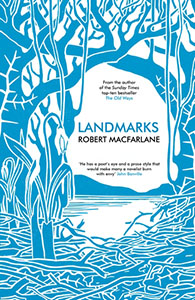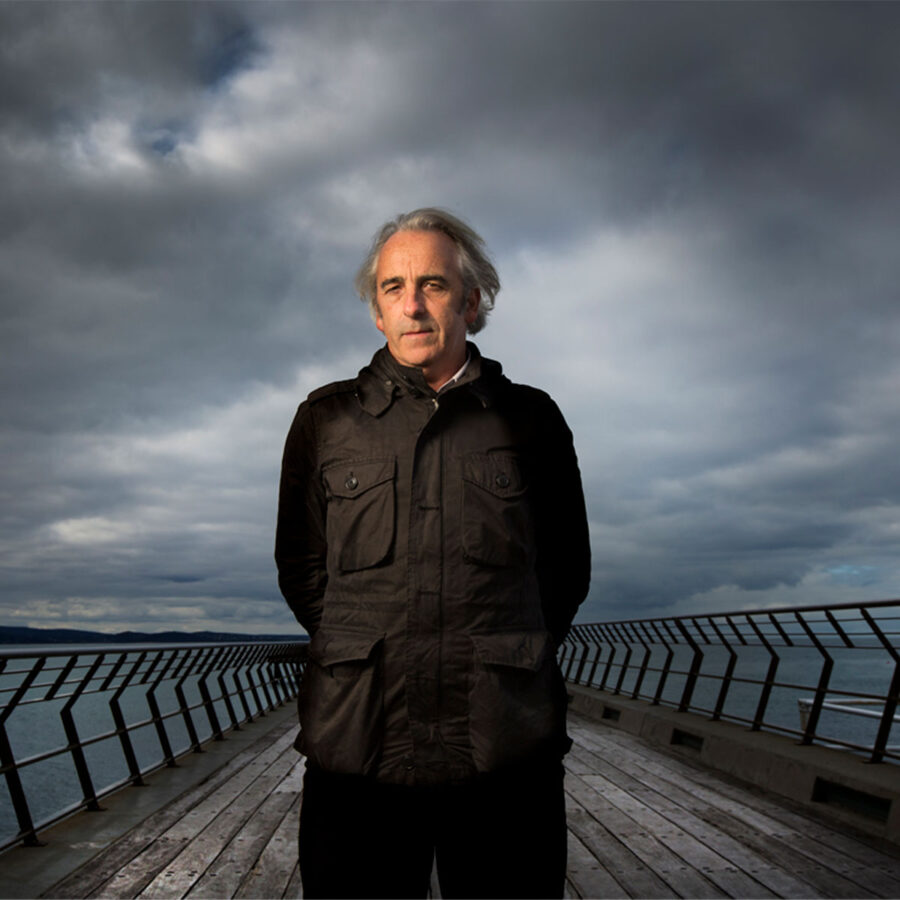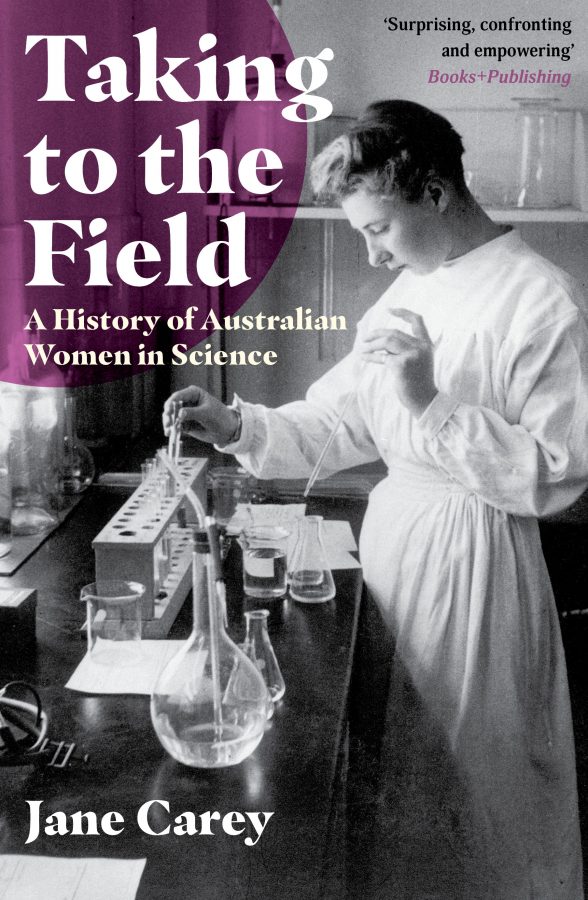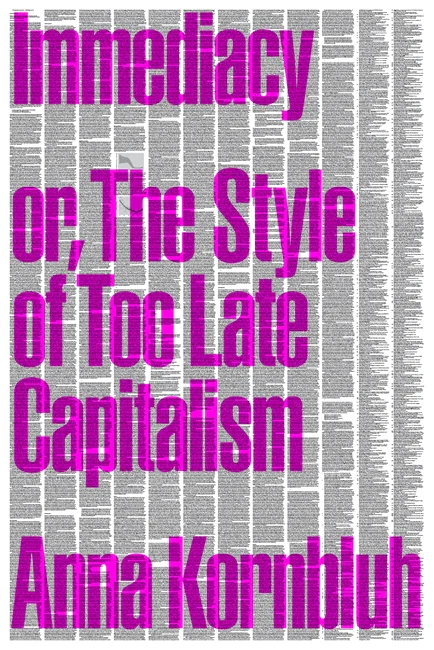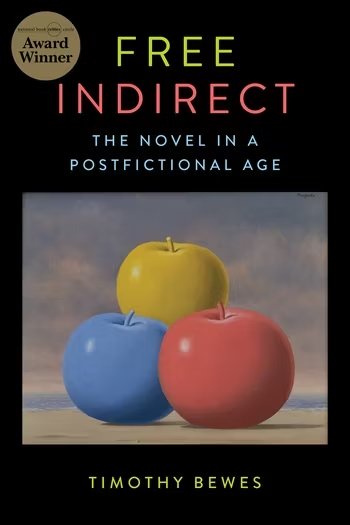In an early chapter of Landmarks, Robert Macfarlane recounts how, in Oliver Rackham’s book The History of the Countryside (1986), the ways in which a ‘landscape is lost’ are divided into four categories:
1. loss of beauty
2. loss of freedom
3. loss of wildlife and vegetation
4. loss of meaning
Macfarlane admires ‘the way that aesthetics, human experience, ecology and semantics are given parity’ in Rackham’s list. That seems almost true, but the list is nonetheless interpretable as a pecking order, a scale of importance, which should perhaps, some 30 years later, be rearranged to demonstrate the increasing relevance of Macfarlane’s own project as arguably the preeminent British nature writer in the climate change era.
In a landscape such as England’s, where London had a population much larger than that of contemporary Melbourne or Sydney as far back as 1911, the very real ‘loss of wildlife and vegetation’ should surely head the list, followed by the attendant and less quantifiable loss of meaning, loss of freedom, loss of beauty. Although Macfarlane’s writing has, in the past, occasionally drawn attention to itself through an over-abundance of grace notes, his concern in Landmarks is not so much with reprising any decorative or ‘what-ho’ tradition of intrepid literary adventurers, but rather with the urgent – as opposed to nostalgic – need to re-engage Britain’s largely metropolitan population with the marvellously specific and intricate habitats that continue to be smashed by industrialisation, population growth and sprawl. But there is a downside to this, a downside of reception, which is worth analysing, especially given his style’s compatibility with literary tourism.
Famously, Macfarlane prefers to filter, if not efface, his enjoyment of the outdoors through admiring portraits of other nature writers. Landmarks is no different to his earlier books in this respect, but crucially its chapters alternate between these biographical set pieces and the immensely purposeful stimulus of glossaries of place-specific words of the British Isles. To qualify for a place in what is, by this stage, looking like the Macfarlane Canon, a writer must be not only an exemplar of intrepid solitude and a brilliant litterateur of nature, but also a little neglected or forgotten. Those familiar with Macfarlane’s work might be surprised, therefore, to find him in Landmarks re-retrieving a writer such as Roger Deakin, whom he has already championed. But we also find new additions to his canon: the assiduous, arthritic, peregrine-obsessed J. A. Baker, for example; as well as that rather saint-like nineteenth-century hunter and author of The Amateur Poacher (1879), Richard Jefferies.
Macfarlane’s portraiture is essentially romantic in nature, with even at times the hint of hagiography about it. But in his chapter on Baker’s The Peregrine (1967), he forces us to confront what is a crucial underlying concept in the new self-reflexive resurgence of nature writing in the UK – ‘species shame’. Baker observes of human beings: ‘We stink of death. We carry it with us.’ The intensity of this language of self-loathing inverts Macfarlane’s even-temperedness, and it serves him well to include it in these pages. For the criticism of Macfarlane’s work in the past has not only been directed at the rather ornamental style with which he has curated his and his heroes’ ‘lost landscapes’; he has also been knocked for lacking of the kind of self-investigation he admires in others. He has a talent for comparing natural with synthetic phenomena, but one suspects that lines like ‘Foam, the creamy colour of writing paper, gathered between shore stones’, from Wild Places (2007), have a de-wilding effect on his subject. When compounded by vanities, such as the author folding a dead seagull’s wings across its chest (in the same book), the effect is a kind of schmaltz, which encloses the subject in a mixture of the antique and the New Age.
It is a quandary of the currently abounding place-literature that by bringing such softening frames to so-called ‘wild’ places, and by writing so charmingly about them, authors are in fact robbing these places of the ‘wildness’ and the psychogeographical freedom they purport to love. Or are they? When one considers that the great majority of Britain has long been domesticated anyway (the reader often suspects a Ballard-ish motorway is conveniently just out of the frame in many instances of contemporary nature writing in the UK), and that the so-called ‘wild’ landscapes of even a country as vast as Australia are often no such thing, as Bill Gammage and others have shown, then it is easy to conclude that any Wordsworthian impulse to leave these landscapes ‘untouched’ is an illusory one.
That is only the case, however, if we are not considering the chief inhabitants of such places: the animals, for whom the absence of humans must be a boon. In a recent essay in the London Review of Books, a prominent figure in the new wave of nature writing in the UK, Scottish poet Kathleen Jamie, described her hopes for Lochmill, a secluded reservoir near where she lives. Lochmill is in the process of being taken out of private ownership by a community buy-back scheme. Jamie describes how when she and her husband visited the loch not long after 95% of the community voted ‘yes’ to the buy-back idea, they did so with a new sense of ‘ownership and responsibility’. But when she describes them chancing upon a narrow deer trail they had ‘never noticed before’ and flushing out a ‘rare’ woodcock from under the bracken, one cannot help but project forward to consider the effects Jamie’s newly enthused and nature-loving community will have on the living creatures of Lochmill. Through a surfeit of good intentions suddenly this quiet lacustrine habitat – ‘you wouldn’t know the loch existed unless you were looking for it’ – may well be inundated with people. No doubt sub-committees will be formed to maintain the loch’s ‘wildness’, but nevertheless a new battle will begin.
When a remarkably similar situation arose recently in my own area in south-west Victoria, community enthusiasm for the reclamation of our own bush-clad water catchment included dreams of water skiing and mountain-bike trails. So perhaps Jamie presumes too much in her essay about the compatibility of a human ‘community’ with a formerly quiet landscape. Her piece triggers thoughts of celebrities who proudly reveal their favourite getaways in interviews, complete with google map links. No matter how sensitively it is ‘managed’, the discovery of each new destination potentially flushes another ‘rare’ species out of its home.
Orcadian poet George Mackay Brown understood this well when he published his poem ‘Trout Fisher’ back in 1965, which tells the story of Semphill, a fisherman who earns his money by showing city visitors the tricks of fishing his local island loch:
‘Forgive me, every speckled trout,’
Says Semphill then,
‘And every swan and eider on these waters.
Certain strange men
Taking advantage of my poverty
Have wheedled all my subtle loch-craft out
So that their butchery
Seem fine technique in the ear of wives and daughters.
And I betray the loch for a white coin.’
This is what humans do, of course, and talented writers are no exception. Look at the novel form, for instance. It is an excellent vehicle for evoking place, and it has created whole industries of literary tourism that attract people to previously ‘unregarded’ space. Think of Captain Corelli’s Mandolin and the once quiet isle of Cephalonia; or think of the poets and the lakes. When Wordsworth bemoans the introduction of ornamental gardening into his local district in the 1820s, he is very persuasive. He prefers the slow and subtle gradation of wild tones to the quick installation of strict lines, and so do his fans.
One suspects that the relatively remote and wintry Scottish Cairngorms could never achieve the levels of tourism of the Lakes District or a sunny Mediterranean island, but with the popularity of ‘cold tourism’ in the global warming era I can’t help wondering what even the smaller effects of Macfarlane’s championing of Nan Shepherd’s beautiful Cairngorms book The Living Mountain (1977) will be on the fauna and flora of that region. When one considers how successful Macfarlane and other writers such as Helen Macdonald have been, and that the publishing phenomenon of new nature writing has been described in the pages of the Guardian as this year’s Fifty Shades Of Grey, one must at least begin to think about it – especially in a century of environmental crises, population explosions and intense digitisations, in which we are sure to see the first world continuing to privilege and market the ‘authentic’, the ‘wild’ and the ‘pure’ in increasingly evangelical terms.
What is clear in all this is that, in an age of social media and hyper-connectivity, reception is bound to creation, just as tourism is bound to art. The more loved a work of art is, the more negative its effect on the landscape it describes may be. This is the bind that a charismatic writer like Macfarlane will always find himself in. His last book, a delicately crafted narrative on the holloways of England, may well have already sparked its own sub-category of tourism. This kind of reception can work both ways, of course, and Macfarlane’s impeccably produced homage to the holloways may be responsible for the preservation of some of these landscapes in the years ahead. Whatever the case, in a country with roughly 61 million people living in only 93 000 square miles of land, he has made certain that, as psychogeographical phenomena, as sites of freedom and release, the holloways will not remain either ‘wild’ or unregarded.
Twenty-first century nature writers have the responsibility to acknowledge this conundrum that they are in. To ignore reception is these days, in this of all fields, to be not only counter-productive but potentially in bad faith. Thankfully, it is clear by the self-reflexivity of Landmarks that Macfarlane is aware of this. As well as the chapters of literary homage, there are many passages in which he attends to such complexities. Most importantly, by the act of making regionally specific language the primary focus of his book, he shifts the focus from the fragility of particular locations, from the vicarious fiction of ‘wild places’, to the very real and salutary textures of the cultural landscape.
The trigger for Landmarks was Macfarlane’s discovery of a unique linguistic solution to the problem of a proposed wind farm project on the outer Hebridean island of Lewis. The planned installation of 234 turbines, standing 140 metres feet tall (twice the height of Nelson’s Column) and with a blade span of over 80 metres, was predicated upon the idea that the interior moorland of the island was a pejorative ‘wilderness’, a terra nullius, a ‘vast dead place’. The islanders of Lewis set out to prove this wrong. In doing so, they created a Peat Glossary, a collection of words specifically originating in that very space, thereby proving that the so-called terra nullius was in fact a terra vocabulorum, and therefore a cultural landscape. The wind farm proposal was defeated and the islanders were so invigorated by their success that they began to envisage the Peat Glossary as part of a larger, perhaps even global, Counter Desecration Phrasebook.
When Macfarlane came across this concept on a visit there in 2007, he undoubtedly recognised a fertile confluence of his interests: landscape, language, the environmental crisis at hand. In essence, Macfarlane is attempting in Landmarks to do for the British Isles what the people of Lewis did for their little island. His tone, burnished with his genteel mannerliness, could hardly be said to be radical, but his urgent environmentalism is nevertheless there, behind the choice of every word in his chthonic glossaries, giving Landmarks that rarely successful texture of the polemical and the poetic.
Both these qualities are at their most powerful in Macfarlane’s assembled glossaries of nearly-lost toponyms, topograms and earthy descriptors of the British landscape. He makes the point early on that ‘language is always late for its subject’. In doing so, he perhaps signals his desire to counter any possible dangers of reception by cupping an attentive ear not to a wild destination vulnerable to human pressures, but to the phenomenological space between creation and naming, the sensorium landscape independent of the colonising ‘word’ of Genesis, or any other frame-heavy religious, lifestyle, or lifestyle-as-religion, depiction.
Just as language ‘produces experience’, so too does nature name itself. The scale of the human figure in the landscape means that the impulse towards utterance often springs from the need to find expressions that correspond to the network of our senses. Thus the specific qualities of a landform or the recurring motif of the weather will demand and generate an equally specific terminology. In the pages of Landmarks, we find the proof of this to be sonic as much as philological. The evidence is ever-present in the glossaries, which owe something to Seamus Heaney’s lifelong assimilation of the Gaelic and Nordic word-hoard into poetry, and also to John Stilgoe’s revelatory Shallow Water Dictionary of 1990. Stilgoe was intent on retrieving long buried linguistic objects from the guzzles of America’s New England estuaries. In Macfarlane’s list of words for ‘watery ground’, in his wider glossary of Flatlands language, we find such dug-up items as the Scots word slunk, meaning a ‘muddy or marshy place, a miry hollow’. In his Waterlands glossary, in the sub-category of ‘moving water’, we find, from East Anglia, the onomatopoeic drindle – ‘diminutive run of water, smaller than a currel’. From Lancashire, in the list for ‘pools, ponds and lakes’, we have flosh – a ‘stagnant pool overgrown with reeds’. And from North Lancashire, in the Coastlands glossary, there is skeer – a ‘stone patch on the sea floor in shallow water.’
Skeer is an interesting one. Can the sound of what is essentially a regional geological term be expressive of an emotion it triggers, which is at the same time a physical sensation? For anyone whose foot has suddenly touched a hard flat stone on the sea bed it would seem so. The initial sibilance leading into the hard thud of ‘k’ provides a percussive yet sensuous prelude to the micro-panic of the word’s mercurial tail, with its echoes of ‘veer’ and ‘sheer’. The sudden elemental change on our skin, in an archetypal realm – the sea – that holds so much mystery and fear for us, is captured and felt. The poetic concision of skeer is exemplary.
Slunk also. Though reminiscent of words such as sludge, gunk, slump, even slop or slippery, its terminal landing on the telluric ‘k’ introduces, indeed telescopes, the precise geological moment in which the land fell into the shape worthy of the description. Like so many other words in Landmarks’ glossaries, slunk qualifies as a kind of dreamtime word, referring to its subject both as once-upon-a-time and still coming-into-being.
As it was for Heaney and so many other English-language poets of Britain and Ireland, Beowulf is a foundation text in all of this. Naturally, there are many Gaelic words in the lists – ur-sounding nouns such as sgoinn, meaning a ‘small pool in the rocky bed of a stream in which salmon get imprisoned when the tide is low’, or gurracag, a ‘heap of hay or corn not yet made into stacks’. But equally there is much regional diversity evident in words such as plim, which in the Cotswolds means ‘to swell with moisture’, and etchierviethe, which is a Jerriais, or Jersey Norman term, meaning a ‘rock frequented by cormorants’.
When encountering picture-words such as these, of common elements in the landscape, one cannot help but think of the loss of language that has occurred here in Australia since 1788. This is an example of the subtle efficacy of Macfarlane’s politics in Landmarks. The pleasure I take as a reader in the glottal and sibilant music of his glossaries does not have me combing the net for cheap fares to Britain, but instead has me reaching for my local Wadawurrung words for the things that co-exist with me every day, for birds such as the tulum (black duck) or peret-peret (spur-winged plover); for rainbow, brinbeal, and mullet, dorla.
The rub is that I also reach for the lost precision of whatever the word must have been here in southwest Victoria for the cormorant-shat rock opposite my house – our lost etchierviethe – or the aboriginal tidal fish trap two miles down the road, the now vanished local version of a sgoinn. The native language reanimates the littoral before me, bringing the shore and sky to life in a way that superimposed English never could. One only has to wander down the main street of my nearest regional centre, Geelong, to realise that knowing what the street name actually means – Moorabool: mussel – can transform one’s sense of even a regional city, leading the eye through desultory malls and gentrified woolstores to the ancient water-glitter at the bottom of the CBD slope. One can taste the word moorabool on the tongue – it is quite literally the tang of the place – whereas Swanston Street in Melbourne makes me think only of the Tasmanian landgrabber it was named after, and Oxford Street in Sydney, when compared with the languages of the Eora, is just a sad simulacrum.
Macfarlane’s point is that language has the power to situate us, to ground us wherever we are and get us noticing the organic world. We need not emit carbon to experience beauty; the journey is on our tongue. He points to the Sussex dialect noun smeuse as a case in point. Meaning ‘the gap in the base of a hedge made by the regular passage of a small animal’, smeuse is an example of how a word can usher us into a life lived at a different scale. As Macfarlane says, ‘now I know the word smeuse, I will notice these signs of creaturely movement more often’. Noticing is in this case the first and indispensable step towards creaturely cohabitation with a mutual sense of respect and obligation.
So does landscape writing, as Macfarlane suggests in Landmarks, begin in the aesthetic and end in the ethical? Certainly, in the case of Australia it must, as violent dispossessions push hard on the heels as soon as one begins even to think of writing about its landscape. But also, at a more general level, the better you come to know a thing, the more you want to care for it. And that caring might just mean leaving it alone. In a chapter entitled ‘Bastard Countryside’, Macfarlane leads us into a less narcissistic and more evolved connection to place, where aesthetic disjuncture, the surprise and poetry of the visual glitch, the rhythms of the broken down and the torn up, even the poisoned pastoral, can be the sustenance that is found. These are the Edgelands, the post-industrial and suburban landscapes written about by Richard Mabey, Iain Sinclair and Will Self: the scrappy, remnant city-edge, rather than the pristine romantic tor. Appreciation of these landscapes requires the kind of decentred and realistic eye W. H. Auden employed in his ‘Ode To Gaea’:
… what,
to Her, the real one, can our good landscapes be but lies,
those words where tigers chum with deer and no root dies,
that tideless bay where children play Bishop on a golden shore?
Macfarlane includes within his glossary of ‘Edgelands’, terms such as soft estate – ‘natural habitats that have evolved along the borders and verges of motorways and trunk roads’ – and bukli tan, a Anglo Romani term which defines ‘waste-ground by the roadside’. There is also swedeland – ‘countryside as perceived by someone from a town or city’, and browings – ‘cleared areas that were formerly brambled’. Importantly, he reminds us that the clear-eyed Richard Jefferies documented these Edgelands as far back as the late 1800s, most noticeably in his book Nature Near London (1883).
Jefferies’ book is truly a wonder of close observation and particularity, but as Macfarlane puts it, the landscape in his work ‘refuses to act as a flat frieze that yields its content stably to the viewer’. Like Nan Shepherd five decades later, Jefferies evolved an independent yet intersubjective way of being with nature, an approach which predated the work of ethologists such as Konrad Lorenz, as well as the influential phenomenology of Maurice Merleau-Ponty and Edmund Husserl. For Jefferies, the landscape was ‘volatile and unruly‘ – not a place of sighs and sentiment where the tiger and the deer co-habitate, let alone the lion and the lamb, but a centreless site of knowledge and experience often ‘dynamically disobedient to the eye’. When we learn that as early as 1850 more people in England lived in the city than in rural areas (a point the planet as a whole is said to have reached in 2010), the cultural palimpsest of the Edgelands grows in fascination. Even back then, Jefferies saw his Nature Near London as fulfilling an archival function, and he was not so much prescient in this as intensely realistic. Nan Shepherd’s statement from The Living Mountain that ‘the focal point is everywhere. Nothing has reference to me, the looker’ would fit easily into his sensibility, as it would with a painter like Cezanne, who was conducting his own parallel experiments in landscape at the same time as Jefferies was writing.
Ultimately, then, what Macfarlane leads us towards in Landmarks is a focus on environmental literacy, a honing of our ability to see and understand what is still there, but always vanishing. To make his point, he describes how in the 2007 updated Oxford Junior Dictionary words deemed irrelevant to a twenty-first century childhood were removed by the editors, while other new coinages gained admission in their place. When forced to release a list of removed words, Oxford University Press revealed that among them were: ash, beech, bluebell, buttercup, cowslip, cygnet, dandelion, fern, heather, heron, kingfisher, lark, nectar, pasture and willow. New words coming into the dictionary included: attachment, blog, broadband, bullet-point, celebrity, chatroom, cut-and-paste, MP3 player and voice-mail.
There is an unavoidably tragic note to the excision of willows and herons from the linguistic landscape of future generations. One even wonders whether the cygnet is somehow having its very future removed by being cut from the dictionary’s pages. Or like the smeuse, will its flying under the philological radar mean it will go unnoticed and therefore be left alone? Macfarlane thinks not. For him, noticing is everything, and language functions as its greatest enabler. In the final chapter of Landmarks, he deals with the language of children, ‘Childish’, in which fresh tropes of the imagination and the self-generating instinct for inventing new language is celebrated as a living continuation of the old word-hoard. Ending his book like this is a refreshing way of reiterating his central tenet, which is that if there is no room for a cygnet in the lexicon of new generations, there may not be any swans around by the time they are old. He leaves the pages of the final glossary following the Childish chapter blank, ‘for future place-words and the readers own terms’.
